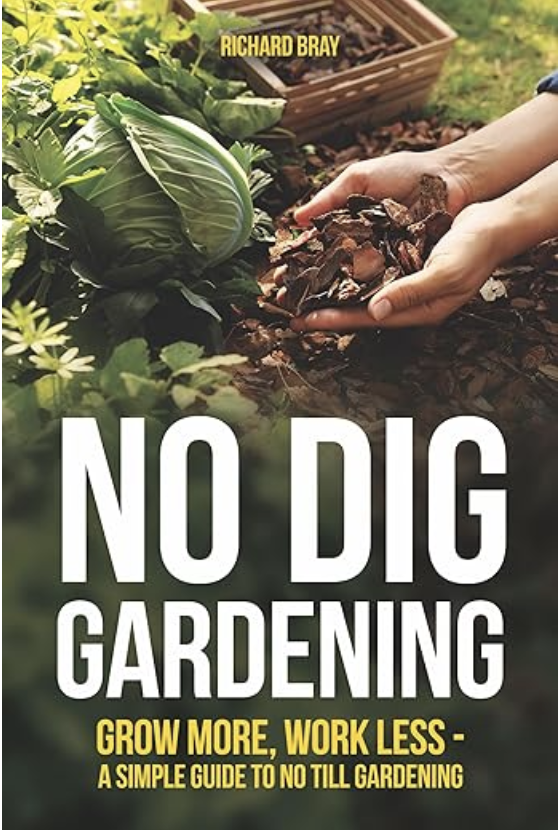The book “No Dig Gardening” by Richard Bray is a brief and to the point guidebook on how to use no dig gardening to maximize your yield in small spaces and get even not so good soil to yield vegetables and flowers with less work than traditional gardening.
The author does an excellent job of introducing the reader to the newer method of gardening and the book is split up into a logical order of chapters, starting a basic introduction and then covering benefits of no-dig gardening, such as soil improvement, and then providing tips on how to establish and then maintain the garden.
In a little bit over 100 pages, the reader will get a comprehensive overview that should enable the reader to start a no dig garden and reap the benefits of letting the garden improve without tilling and disturbing the soil on a regular basis. The author stresses that soil left alone will improve overtime and even weeds are not an issue if covered by mulch and compost. The soil will improve with earthworms contributing to the better soil and enabling all kinds of plants to grow, even in soil that started off being a relatively poor soil.
Benefits of no dig gardening besides less work involved, include less water needed, less or no need to purchase expensive plant food, fertilizer and overall, thereby reducing the environmental impact of establishing and maintaining your garden.
Composting and mulch are important in improving the soil and if you dare, you can also increase the presence of earthworm, which also contribute to a better soil. To get the reader started with composting, which is not that difficult to do and helps with reducing waste in landfills, the author has included a nice write up on the various way to compost. Once you are ready to plant, the author has also a nice graphic to show which plants do well if planted together and which combinations should be avoided. In addition to many graphics, one table stood out to me; the author included a table to show in which growth zone which plants are suitable to block weeds or best for erosion controls. The information in one such table is incredibly helpful for any gardener and shows the research the author has done to make this book suitable to a variety of readers.
Overall, this book is a nice introduction to no dig
gardening with many helpful tips but does not overload the novice no dig
gardener with too much information. A very helpful book that I can recommend. This book is available on amazon
I received a book from the author at no cost. All opinions expressed in this review are my own.

